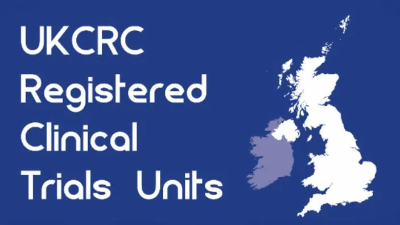
- Cancer
- Trials open to recruitment
TAPS02
Targeted drug intervention in men at risk of progression on active surveillance for early prostate cancer: A randomised trial - Therapeutics in Active Prostate cancer Surveillance 2
Research summary
Study design
TAPS02 is a phase 2, randomised, multicentre, double-blind, placebo-controlled trial investigating the use of short-term androgen targeted therapy (sATT) in the form of apalutamide (Erleada) in men on active surveillance for prostate cancer and at a high risk of disease progression.
The trial comprises a 3-arm adaptive design to compare different durations of apalutamide treatment, using imaging as an indicator of early treatment response (Magnetic Resonance Imaging (MRI) at 12 months post-treatment).
Rationale
The number of men diagnosed with prostate cancer in the United Kingdom (UK) and worldwide is increasing. In the UK, over 52,000 men were diagnosed in 2016 alone and it is estimated this figure will be closer to 70,000 by 2030. A significant proportion of these men will present with early disease that is unlikely to lead to cancer morbidity or mortality. There is increasing recognition that many of these men will have prostate cancer that does not need immediate radical treatment (e.g. surgery of radiotherapy).
The concept of active surveillance (AS) rather than immediate radical therapy has therefore gained popularity as a first management option for these men. These men are typically those classified as having Cambridge Prognostic Group (CPG) 1 and 2 disease, based on the NICE guidance recommendations.
AS seeks to monitor men closely and initiate treatment if and when this becomes necessary and avoid side-effects from unnecessary treatments. Monitoring is performed by a combination of regular prostate-specific antigen (PSA) blood tests, imaging by Magnetic Resonance Imaging (MRI), and scheduled repeat prostate biopsies. A number of studies have shown that AS is a safe and well tolerated mode of management and it is gaining wide-spread acceptance in uro-oncology practice. Indeed, in UK practice, it is the fastest growing form of clinical management.
It is, however, known that over 30% of men will progress to active treatment while on AS within a median of two and a half years. Work in Cambridge has further identified subgroups of men on AS who are at particularly high risk of disease progression and who will eventually need treatment e.g. men with CPG2 disease/high burden of disease at biopsy or MRI. The process of AS with close long-term monitoring gives a unique opportunity to consider therapeutic strategies in these at-risk men that can potentially prevent progression and hence reduce conversion rates to treatment. This is particularly important as radical treatments for localised prostate cancer have significant long-term and permanent side effects. As an example, surgery carries a risk of incontinence of between 10-30% and a risk of impotence of between 50-70%.
Given the pivotal role of the androgen receptor in prostate cancer pathogenesis, it is logical to target this pathway as a potential method of inhibiting or delaying disease progression. There is preliminary
evidence that pharmacological intervention used as short-term androgen targeted therapy (sATT) in men with early disease may inhibit the progression of prostate tumours. In an earlier feasibility study TAPS01, we have proven this approach, underpinned by pilot data and durability of the response (Barrett et al 2022).
Our research in Cambridge has further identified the key groups at highest risks of progression while on AS and hence the ones most likely to benefit from a targeted short-term therapy intervention. Crucially, our work has identified a clear endpoint (reaching CPG3 disease) on the 5-point NICE prostate cancer classification system when radical treatment will materially improve disease-specific survival versus ongoing surveillance.
Building on the success of TAPS01, we are now undertaking the TAPS02 trial – a potentially practice-changing randomised phase 2 clinical trial – to test the clinical value of sATT to delay disease progression in men at the highest risk of disease progression when managed by AS.
Main inclusion criteria
To be included in the trial the patient must:
• Have prostate cancer with any one or more of the following:
o CPG2 (based on Grade Group 2 on histology)
o CPG1 (based on Grade Group 1 on histology) with PSA high density (PSAd >0.15) and LIKERT or PI-RADS 4/5 lesion (individual or combined) of ≥10mm size.
o CPG1 with PSA high density (PSAd >0.15) and ≥50% biopsy core involvement (number of positive cores/all cores taken) with target biopsies counted as one and with at least a LIKERT or PI-RADS 3 lesion.
• Have given written informed consent to participate.
• Be aged 18 or over.
• Have an Eastern Cooperative Oncology Group (ECOG) status 0-2.
• Have selected active surveillance as a management option.
• Have an MRI detectable lesion with an PI-RADS score of ≥ 3 using Likert scale OR PI-RADS (version 2.1) reporting criteria. If PI-RADS score is 3 then lesion size (single or combined) of ≥10mm.
• Have prostate cancer from a combination of image guided targeted + systematic biopsies and MRI lesion and biopsy are concordant for a prostate cancer diagnosis.
• Not anticipated to require bladder outlet surgery during IMP treatment or for up to 12 months of follow-up.
• Meet all of the following clinical laboratory assessment criteria:
o Haemoglobin ≥ 9.0 g/dL, independent of transfusion and/or growth factors within 3 months prior to randomisation.
o Platelet count ≥ 100 x 109/L independent of transfusion and/or growth factors within 3 months prior to randomisation.
o Absolute neutrophil count (ANC) ≥ 1.0 x 109/L within 21 days prior to randomisation.
o Serum albumin ≥ 3.0 g/dL within 21 days prior to randomisation.
o Glomerular filtration rate (GFR) ≥ 30 ml/min AND Serum creatinine ≤ 3 times the ULN (calculated by Cockcroft and Gault equation using actual body weight) within 21 days prior to randomisation.
o Serum potassium ≥3.5 mmol/L within 21 days prior to randomisation.
o Aspartate aminotransferase (AST) or alanine aminotransferase (ALT) ≤2.5 × ULN AND Serum total bilirubin ≤1.5 × ULN within 21 days prior to randomisation (Note: In patients with confirmed Gilbert's syndrome, if total bilirubin is >1.5 × ULN, measure direct and indirect bilirubin and if direct bilirubin is ≤1.5 × ULN, patient may be eligible in consultation with their physician).
Main exclusion criteria
The presence of any of the following will preclude patient inclusion:
• Contraindications to apalutamide or its excipients.
• Pelvic metalwork interfering with MRI prostate interpretation.
• Any prior or concurrent use of androgen deprivation therapy (ADT) or androgen receptor targeting agents (not including established and continued use of 5-ARIs for urinary symptoms).
• Systemic therapy for prostate cancer.
• Inability for patient to have prostate MRI scan.
• Concurrent involvement in a Clinical Trial of Investigational Medicinal Product (CTIMP); participation in an observational trial/studies is acceptable.
• Seizure or known condition that may pre-dispose to seizure (including but not limited to the following within 1 year prior to randomisation: prior stroke, transient ischemic attack, loss of consciousness, brain arteriovenous malformation; or intracranial masses such as schwannomas and meningiomas that are causing oedema or mass effect).
• Medications known to lower the seizure threshold or cause seizures must be discontinued or substituted at least 28 days prior to randomisation.
• In the opinion of investigator, patient is at increased risk of falls or fractures.
• Severe/unstable angina, myocardial infarction, symptomatic congestive heart failure, arterial or venous thromboembolic events (e.g., pulmonary embolism, cerebrovascular accident including transient ischemic attacks), or clinically significant ventricular arrhythmias within 6 months prior to randomisation. Cardiovascular risk factors should be optimised i.e. hypertension, diabetes, dyslipidaemia.
• Uncontrolled hypertension (SBP ≥ 160 mmHg or DBP ≥ 90 mmHg). Patients with a history of uncontrolled hypertension are allowed provided blood pressure is controlled by anti-hypertensive treatment.
• Gastrointestinal disorder affecting absorption.
• Medicinal products known to prolong the QT interval or medicinal products able to induce Torsade de pointes such as class IA (e.g., quinidine, disopyramide) or class III (e.g., amiodarone, sotalol, dofetilide, ibutilide) antiarrhythmic medicinal products, methadone, moxifloxacin, antipsychotics (e.g. haloperidol). Alternative therapy, for the prohibited medication known to prolong the QTc, may be instigated. A minimum washout for the discontinued medication of ≥ 4 half-lives is required prior to starting IMP.
• Symptoms suggestive of Stevens-Johnson syndrome (SJS)/toxic epidermal necrolysis (TEN).
Funders and sponsors
Funders (not involved with study design or execution): Janssen-Cilag Ltd
Sponsors: Cambridge University Hospitals NHS Foundation Trust and the University of Cambridge
Chief investigator
Professor Vincent J Gnanapragasam
Contact details
TAPS02 email: [email protected]






